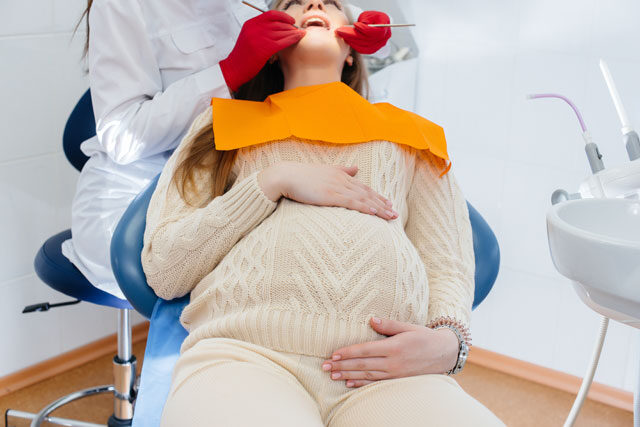Pregnancy and childbirth are two common periods when women find out about Kegel exercises. Such a statement is primarily related to the fact that the problems one can solve doing Kegels typically appear while expecting a baby or soon after you give birth.
So what are they and why performing Kegel exercises can do good for an expecting mother and a woman who has already passed this stage? Let’s find out!
What Are Kegel Exercises? How to Do Them?
These exercises for pelvic floor muscles got their name from a gynecologist who invented them in the 1940s. Arnold Kegel suggested using them as a conservative treatment for various gynecological health problems women faced after vaginal delivery.
Practicing Kegel requires you to contract the muscle of the pelvic floor with the following relaxation. The first constituent of Kegels is as important as the second one. Contraction and relaxation go hand-in-hand. Otherwise, you risk doing harm to your body instead of improving your muscle tone.
Finding your pelvic floor won’t be any difficult. Just imagine you want to pick up a coin from the floor using your vagina. The muscles you feel at this moment are the ones you should involve in the exercise. If you’ve located your pelvic floor muscles correctly, you won’t feel any discomfort while exercising or after that.
But if you do have pelvic or back pain after performing Kegels, contact your doctor for advice or make an appointment so that your OB-GYNS can help you practice.
Make sure Kegels become your daily ritual. By repeating them 10-15 times thrice daily, you’ll improve your muscle tone and significantly improve your sexual health. You shouldn’t expect fast results, though. It may take months to notice a difference. Anyway, you shouldn’t give up. Regularity is the key to success.
Pelvic Floor Muscles. Why Should We Keep Them in Good Shape?
Before we can get down to explaining the importance of pelvic floor exercises, it’s essential to make sure you know about the function of this group of muscles in the human body.
You probably know that our pelvic organs are supported in their places due to the pelvic floor muscles. Their task is to prevent the lowering of our uterus, bladder, and rectum, as well as provide support for urethral and rectal sphincters.
During pregnancy, the load on the pelvic floor grows due to the increasing size of the woman’s belly and the weight of the fetus growing inside. During labor, the pelvic floor muscles have to complete another important mission – stretch good enough to let the baby come out.
Having gone through such a challenge, it’s no surprise your muscles may get weaker and, therefore, fail to perform their regular function well enough. To help them recover and go back to shape, you should do Kegel exercises.
Ensuring the good shape of your pelvic floor, you can go through the periods of pregnancy and child delivery without any problems.
How Can You Benefit from Kegels?
Kegel exercises during pregnancy should be done by medical advice only. Working on muscle strengthening can help pregnant women prepare better for their child delivery. Besides, this can be an effective measure to prevent any postpartum problems related to urinary stress incontinence, rectal incontinence, etc.
As for those who have already given birth, the decision to strengthen the pelvic floor muscles often comes after a consultation with a health care provider. The reason is OB GYNS can notice the problem sooner than you feel it in practice. For this aim, a medical specialist can apply a cough test, which allows for detecting urinary incontinence or pelvic organ prolapse in the early stage.
By exercising regularly, you can resolve several women’s health issues that can significantly worsen your quality of life:
- unintended urine leakage when jumping, running, laughing, and doing other activities that involve pelvic floor muscles;
- fecal incontinence aka inability to hold stool inside the rectum until you reach the toilet;
- prolapse of the pelvic organs, which means your uterus, cervix or other pelvic organs slip down, bulging into the vagina.
Kegels can also help women get more pleasure from sex by promoting stronger and more lasting orgasms. Some medical reviewers claim a strong pelvic floor can shorten the second phase of child delivery. Women with strong pelvic muscles are also considered faster to recover after labor.
Are They Safe During Pregnancy?
Pregnant women are known to be extra cautious as they feel responsible not only for their own bodies but for the baby inside them as well. Therefore, the hesitations regarding the safety of Kegels in this period are absolutely normal.
Scientists and practicing healthcare specialists agreethat this kind of exercise is absolutely safe for an expecting mother and her fetus. There is no data regarding any medical health issues related to pregnant women performing Kegels. So no need to worry.
The Red Light in Kegel Exercises
While so much is said about the benefits of Kegels and their importance for women’s health, it’s essential to speak about the red light that should make you stop and think about things you do wrong in exercises. Therefore, you should always consult your OB-GYN before starting on Kegels. Women suffering from certain health conditions should be especially careful when working with this group of muscles. We now speak about those with:
- vaginismus;
- genito-pelvic pain (penetration disorder);
- vulvodynia;
- the overactive pelvic floor.
Probably the only drawback of Kegels is the risk of increased muscle tone, which can be even worse than muscle weakness. Performing the exercises wrongly can cause a range of conditions that you’ll have to deal with.
The typical mistakes women do with this kind of exercise include the contraction of the wrong muscles and skipping muscle relaxation. Both can cause abdominal pain, back pain, or a range of gynecological conditions caused by an overly active pelvic floor. The latter usually results in painful intercourse, significantly affecting the quality of life of a woman and her interpersonal relations with the partner.
How to avoid that? Just do the Kegels correctly.
Kegel Exercises for Pregnancy – Summing up
Pregnancy combines a pleasurable emotional experience with physical hardships this period can bring. The task of every pregnant woman is to go through this time maximum easy and preserve her physical and emotional health for a happy future as a mother.
Kegels play one of the essential roles in the physical well-being of an expecting mother. Therefore, they must be present in her daily routine no matter what. Regardless of whether you are getting ready for vaginal labor or C-section, do pelvic floor exercises regularly. Just contact your doctor for approval.
Take care of your health and remember that every baby needs a healthy mother. Good luck!




